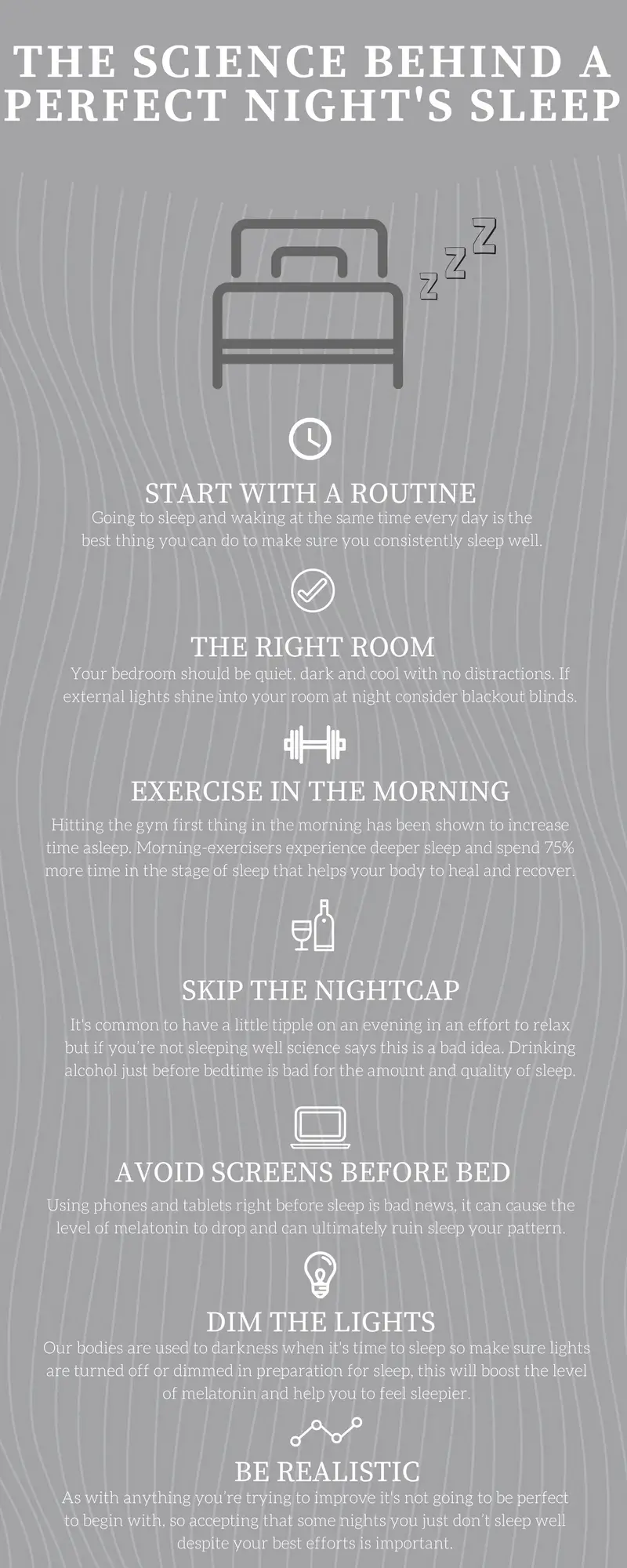The Science of Sleep: How to Get the Perfect Night’s Sleep

You probably know that getting a good nights’ sleep is important. Sleep helps to relieve stress, rejuvenate our minds and body, improve focus, and more. It ensures you can have a productive day.
And when you’re an entrepreneur, business person, or creative, it’s particularly required of you to maintain hours of focus and attention to detail for success in your day to day life. Getting enough quality sleeps helps you to get that.
However, it’s usually only after our sleep patterns have been disrupted that we realize just how important having a good night's sleep is. But, in our hectic modern lifestyles, getting a consistent amount of shuteye every night is a challenge at the best of times.
Thankfully, scientists have been concerned with people's sleep patterns and conducted sleep research to improve our sleep habits for many years. They can now reveal useful advice for improving sleep quality.
But before we see how to get the perfect night’s sleep, it’s important to understand what quality sleep looks like so that we know if we are getting it. You might think you get enough sleep, but the signs of poor quality sleep could be saying otherwise.
According to The National Sleep Foundation, a typical good night's sleep for an adult is characterized by these four factors:
- You take half an hour or less to fall asleep.
- You wake up no more than once per night.
- If you do wake up in the middle of the night, you fall back asleep within 20 minutes.
- You’re asleep for at least 85% of the time you spend in bed.
If you are regularly meeting all of those four factors, then you probably don’t have any problems with sleep. But, if you, your family, or someone else you know are regularly failing to meet one or more of those factors, then it’s likely your sleep pattern has been disrupted and or there is room for improving your sleep quality.
Tips to Improve Sleep Quality & Get the Perfect Night’s Sleep

Improving your sleep quality starts with a routine. Go to sleep and wake up at the same time every day. Scientists say this is the best thing you can do to ensure you sleep well.
Secondly, create the right environment for sleeping in your room. This means your bedroom should be quiet, dark, and cool with no distractions. If external lights sip into the room, consider blackout blinds .
Thirdly, make sure you have the right mattress and sleeping garments for the perfect sleep. Natural fabrics like cotton and silk are great for sleeping in, but synthetic fabrics like polyester and spandex not so much.
But those are not the only factors that contribute to having a good night sleep.
Factors for Getting a Perfect Night’s Sleep - Infographic
Check out the infographic below, created by De Vere Hotels who know a thing of two about creating the perfect sleeping environment in their hotels, to learn more about the science behind getting a perfect night’s sleep:
Remember to be realistic when trying to improve your sleep quality. As with anything you are trying to improve, it is not going to be perfect to begin with. So, accept that some nights you may not sleep well despite your best effort.
(Click the infographic to enlarge).











![82% of Office Workers Want More Team-Building Events [Survey]](/sites/default/files/styles/video_thumbnail_bottom/public/office-workers-business-employees-team-building-happy.jpg?itok=Zn94E9-t)











